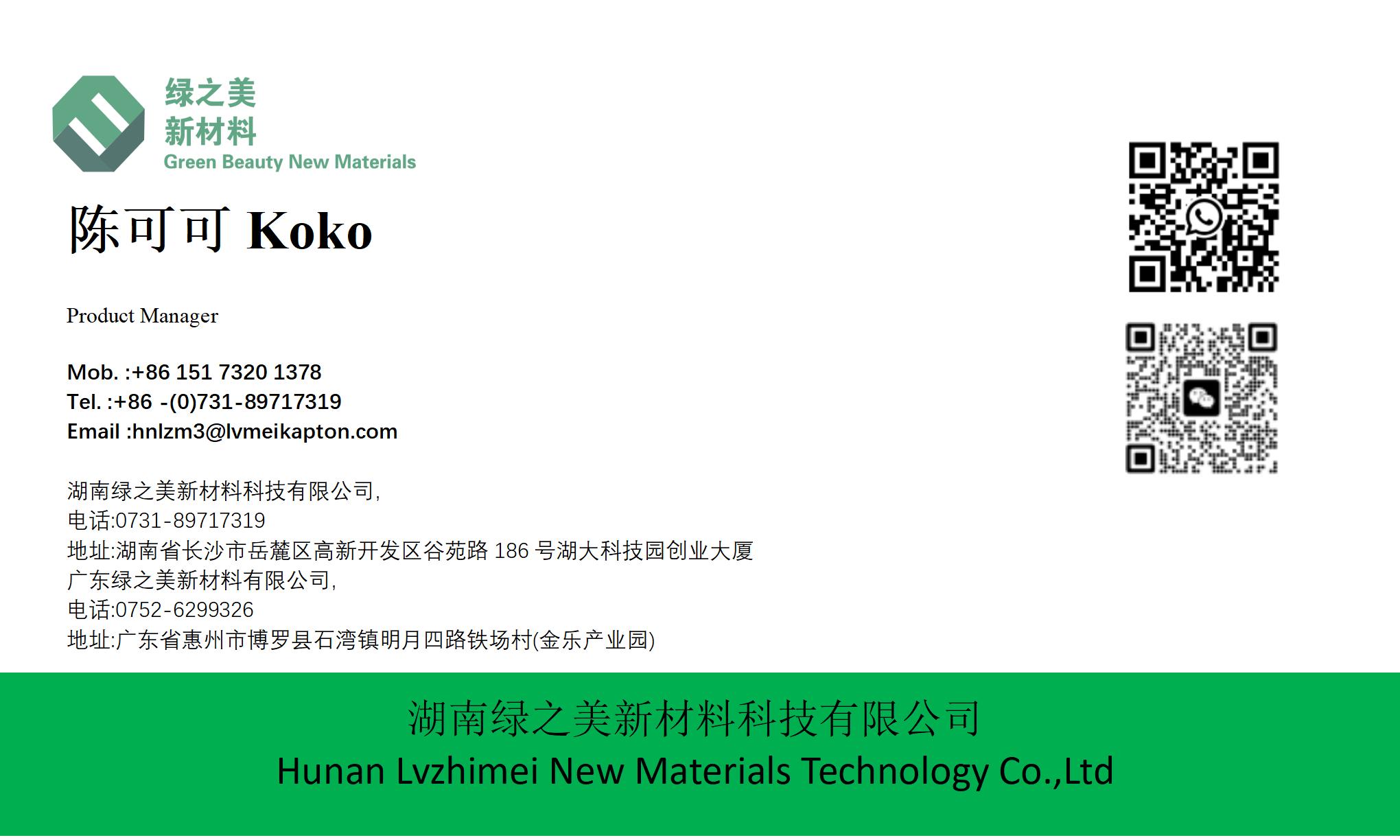hnlzm@lvmeikapton.com
+86 13787123465


Hunan Lvzhimei New Material Technology Co., Ltd.


NameDescriptionContent
What Technical Innovations Define Modern Strong Adhesion and Blocking High Temperature Tape? |https://www.lvmeikapton.com/
Source:
|
Author:Koko Chan
|
Published time: 2025-07-22
|
10 Views
|
Share:
In industrial applications, they are essential for insulation in motors, transformers, and cable bundling. Automotive manufacturing relies on them for wire harness protection, engine compartment sealing, and thermal management. Electronics utilize tapes for SMT (Surface Mount Technology) processes, preventing components from shifting during wave soldering or reflow ovens. Aerospace applications demand tapes that withstand extreme temperatures (-65°C to 300°C) and harsh environments, ensuring safety in aircraft assemblies.

1.1 Importance of High-Temperature Adhesive Tapes in Various Industries
High-temperature adhesive tapes play a crucial role in industrial, automotive, and electronics sectors.
In industrial applications, they are essential for insulation in motors, transformers, and cable bundling. Automotive manufacturing relies on them for wire harness protection, engine compartment sealing, and thermal management. Electronics utilize tapes for SMT (Surface Mount Technology) processes, preventing components from shifting during wave soldering or reflow ovens. Aerospace applications demand tapes that withstand extreme temperatures (-65°C to 300°C) and harsh environments, ensuring safety in aircraft assemblies.
1.2 Special Performance Requirements for High-Temperature Tapes
High-temperature environments pose challenges to tape adhesion and barrier properties.
Adhesion: Must maintain strong bonding at ≥200°C without slippage or residue. Materials like silicone or acrylic-based adhesives with modified polymers enhance thermal stability.Barrier Properties: Effective resistance to heat, chemicals (solvents, acids), and gas permeation. For example, in PCB manufacturing, tapes must block molten solder from penetrating under components.Flexibility: Ability to conform to irregular surfaces without cracking under thermal cycling. Thin films like PI (Polyimide) or ETFE (Ethylene Tetrafluoroethylene) offer superior dimensional stability.
Section 2: Key Factors Affecting Tape Performance
2.1 Impact of Substrates
Substrate selection defines tape durability and functionality.
●
PI Film: Core material for >250°C applications. Exceptional thermal stability, dielectric strength, and UV resistance. Ideal for aerospace and electronics.
●
Glass Fiber: Provides mechanical reinforcement in automotive spray masking tapes, resisting abrasion and maintaining shape during high-temperature painting.
●
PTFE (Teflon): Chemical inertness and non-stick properties, suitable for industrial release applications.
2.2 Role of Adhesive Formulations
Adhesive chemistry is pivotal.
●
Nano-Reinforced Adhesives: Incorporating silica nanoparticles or carbon nanotubes improves adhesion strength and thermal conductivity.
●
Hybrid Systems: Combining thermosetting (e.g., epoxy) and thermoplastic (e.g., polyamide) components balance flexibility and long-term stability.
●
Solvent-Free Formulations: Meet environmental regulations and reduce curing time, crucial for high-speed production lines.
2.3 Importance of Manufacturing Processes
Precision manufacturing ensures consistent performance.
●
Coating Uniformity: Laser thickness measurement systems prevent adhesive unevenness, avoiding weak spots.
●
Curing Parameters: Optimal oven temperatures (e.g., 150-200°C) and dwell times solidify adhesives without degrading substrates.
●
Edge Finishing: Anti-static treatments and precision cutting prevent dust accumulation and tearing during handling.
Section 3: Breakthrough Technological Innovations
3.1 Nanomechanical Anchoring Technology
This innovation enhances adhesion through microscopic "hooks."
Principle: Nano-sized particles (e.g., alumina or titanium oxide) penetrate surface micropores, creating mechanical interlocks. At high temperatures, these bonds resist shear forces. Example: In automotive underhood applications, tapes with nano-anchors withstand vibration and thermal expansion without detachment.
3.2 Thermochromic Indicator Coatings
Intelligent coatings change color at critical temperatures.
Functionality: Integrated pigments shift hues (e.g., from blue to pink) when reaching thermal thresholds, warning of overheating. Application: During PCB reflow, technicians can visually monitor tape status, preventing component damage.
3.3 Multifunctional Hybrid Adhesives
These adhesives adapt to diverse surfaces.
Formulation: Blend of acrylic copolymers, fluoropolymers, and elastomers. Advantages: Bonding to rough surfaces (e.g., textured aluminum), self-healing properties to recover from minor damages, and improved moisture resistance.
Section 4: Material Innovations and Application Examples
4.1 PI Tapes with Graphene Additives
Graphene reinforcement boosts thermal management.
Benefits:
●
30% higher thermal conductivity, aiding in cooling electronic devices.
●
Improved mechanical strength (2x tensile modulus).
●
Case study: Electric vehicle battery packs using graphene-enhanced tapes reduced hotspots by 15%.
4.2 Self-Adhering Backing Spray Masking Tapes
Innovative design for automotive painting.
Advantages:
●
Adhesive backing eliminates need for manual priming, saving 40% application time.
●
Micro-channel structure prevents paint seepage under tape edges.
●
Clean removal at 150°C without residue, ensuring flawless finishes.
Section 5: Impact of Technological Innovation
5.1 Cost and Market Dynamics
Cost Analysis:
While upfront R&D costs for nano-anchoring or graphene composites are higher, long-term benefits (e.g., 50% reduction in warranty claims) offset expenses.
Market Expansion:Emerging demands in renewable energy (solar module encapsulation) and 5G electronics drive growth.
5.2 Future Trends (300 words)
Smart Tapes: Integration of sensors for real-time monitoring (e.g., strain gauges in aerospace composites).Sustainability: Biodegradable PI alternatives from renewable feedstocks and water-based adhesives.Multifunctionality: Tapes combining electromagnetic shielding, heat dissipation, and bonding in a single layer.
Conclusion
Advancements in substrate engineering, adhesive nanotechnology, and intelligent indicators are reshaping high-temperature tape capabilities. As industries evolve towards electrification and sustainability, these innovations will unlock new applications, driving efficiency and reliability across sectors.


Hunan Lvzhimei New Material Technology Co., Ltd.
Quick Links
Product Categories
© 2024 Hunan Lvzhimei New Material Technology Co., Ltd.All Rights Reserved. Designed by Erge
0731 - 89717319
hnlzm@lvmeikapton.com
+86 13787123465
Room 502, Chuangye Building, No186, Guyuan Road, High-Tech District, Changsha, Hunan, China
CONTACT



